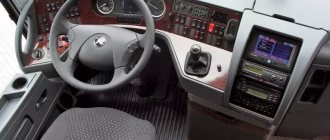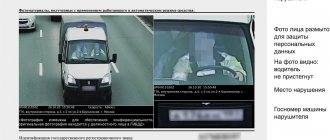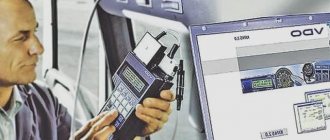What are mud flaps for?
Mud flaps on a car are special linings located under the rear and sometimes under the front wheel arches. Typically, such a part is made of dense rubber, although a lightweight, plastic version of the product is often used on passenger cars. The mudguard serves solely to protect vehicles behind from getting stones and other debris into the windshield.
It is important to know! At high speeds, gravel, crushed stone and other hard rocks, of which there are many on the road surface, can not only damage the car, but also lead to more serious consequences, such as injury or even death to a person. In order to prevent such troubles, the administrative code introduces fines for driving without mudguards in 2021 for all categories of drivers.
Legislation regarding the presence of mud flaps on cars
According to the legislation of the Russian Federation (namely, Article 7.5 of the Traffic Regulations), the mudguard can be made of rubber or soft plastic, capable of holding back not only dirt, sand and water, but also stones flying at high speed from under the wheels. The absence of this protective element does not entail a fine only in two separate cases:
- Mud flaps are installed only on the rear pair of wheels (on the front axle, pads are optional);
- The mentioned part is not provided in the factory design of the vehicle.
And if everything is clear with the first situation, then the second circumstance causes a lot of controversy between drivers and traffic police inspectors.
The mudguard itself must have a cast form (if it consists of two or more parts, then no gaps are allowed between them), and fully comply with GOST 52422 of 2005. It includes the following items:
- The lower part of the protective part can be located at a distance of no more than 200 mm from the asphalt surface;
- The inside of the splash guard must be equipped with a special device for retaining water;
- The angle of inclination of the pad cannot exceed 10 degrees against the vehicle;
- The width of the protective part must correspond to the width of the wheel or extend beyond it (no more than 200 mm).
At the same time, State Traffic Inspectorate employees can fine the driver both for the complete absence of mud flaps and for their non-compliance with GOST. But the amount of the financial penalty in both cases will be the same, since the Code of Administrative Offenses does not provide for a separate article for failure to comply with uniform standards.
Rubber mud flaps.
Advantages
:
• easy to maintain, easy to wash, replace,
• flexible, will not break when hitting an obstacle or curb,
• the lowest price.
Flaws:
• cannot withstand low temperatures, becoming brittle and brittle at sub-zero temperatures.
• When the vehicle moves at high speed, the flexibility of the product becomes a disadvantage; the mud flaps deviate and cease to perform their protective function.
• short service life compared to other types of mudguards; they can tear at the attachment points and simply come off.
All rubber mud flaps are universal and are divided only into the front and rear pair of mud flaps.
Grounds for imposing a fine
According to the Code of Administrative Offenses, an employee of the State Traffic Inspectorate can issue a fine to the driver for the absence of mud flaps on a car in 2021 on only two grounds:
- Visual non-compliance of the part with the established GOST (the pad is too narrow, short, or there are holes on it that appeared as a result of wear);
- Virtual absence of mudguard.
At the same time, the driver will not be able to appeal the traffic police decision, citing the fact that the part fell off when the car was last used. After all, the Code of Administrative Offenses strictly prohibits driving a car without mudguards. If they break down, the car owner must replace them on the spot: independently or by calling a specialist.
Are mud flaps needed on cars pravo-38.ru
From time to time on the roads you can see the following picture: a traffic police inspector waves his baton - and the next driver stops. There can be a lot of reasons for such a stop, but more and more often the reason for nagging from inspectors is that the car does not have mudguards.
It would seem like a small plastic part, but the fine for not having it can be quite significant. Let's figure out what the legislation says about the presence or absence of this detail, what kind of punishment is possible here - and how to avoid it? First of all, let's look at what exactly mud flaps are - and why are they needed?
Amount of fine for lack of mudguards
In accordance with Art. 12.5 of the Administrative Code, driving without mudguards in 2021 will be subject to a fine of 500 rubles (for both motorcycles and four-wheeled vehicles of class B, C, D). And even though a violation of this kind falls into the light category, the driver is not entitled to a warning for it.
In practice, State Traffic Inspectorate employees rarely issue orders under Art. 12.5 of the Code of Administrative Offences, limited to only an oral remark. But repeated ignoring of the mentioned article in a short period of time can increase the likelihood of liability for the lack of mudguards.
What is the penalty for driving without mudguards?
New cars designed according to GOST, in principle, do not need rear mudguards. If you are stopped by a traffic police inspector, you need to explain to him that the wheel axle is at the same level as the lower edge of the car body, which means that cars behind are protected from “splashing.”
If the car has a different design and does not have mudguards, its owner may be fined. Today it is 500 rubles. There is also an alternative - a simple verbal warning. This is stated in Part 1 of Art. 12.5 Code of Administrative Offenses of the Russian Federation.
And clause 7.5 of the Russian Federation Traffic Regulations classifies the absence of mudguards as a malfunction that prohibits further operation of the vehicle. Therefore, the driver needs to park the car and go to the nearest car store to buy mud flaps, or proceed to the parking or repair site with the hazard lights on (according to clause 2.3.1 of the traffic rules).
According to the maintenance regulations, mudguards must be installed on the machine behind the drive axle. Which axle is the drive axle can be found in the auto parts catalogue. In addition, the mud flaps must match the width of the wheels and not have significant damage.
How to avoid a fine
If you were stopped by a traffic police officer for not wearing mud flaps, but he did not have time to draw up a report yet, then you have every chance to avoid this procedure by citing the following arguments:
- Protective pads are not provided on the vehicle by the manufacturer (mudguards were not installed on most domestic vehicles. Moreover, the inspector must prove that the mentioned part belongs to the design of the vehicle. Otherwise, he will not be able to fine the driver under Article 12.5 of the Administrative Code);
- The mudguard fell off during the last time the car was used and at the moment you are moving towards a repair shop in order to fix the problem (although according to the rules this circumstance is equivalent to a violation, in practice inspectors can take pity on the car owner and let him go, making only a verbal remark);
- If a traffic police officer insists on issuing a fine for the lack of mud flaps, under no circumstances agree with the punishment received, and demand from the police a blank form for drawing up an explanatory note (in the last document it is necessary to mention that there were no problems when leaving the parking lot. This will help you in further challenging the protocol in court).
Attention! Art. 12.5 of the Administrative Code is not considered serious, which is why you can evade responsibility for non-compliance even through a banal conversation with representatives of the traffic police. But if a conflict situation arises with patrol officers, the driver will be able to defend his rights in court.
What to do if you are given a fine
If a traffic police officer wants to fine you, he will draw up a resolution imposing an administrative fine. According to the law, you have the right to request the preparation of a protocol and then appeal it to the regulatory authorities. It is enough to notify the traffic police officer that you do not agree with the chosen preventive measure and insist on mitigating the punishment before warning about the need to eliminate the problem.
Traffic police officers, as a rule, are reluctant to draw up reports on minor violations, and therefore you have a chance that a fine will not be issued. Using the money you save, we recommend that you buy and install a splash guard to avoid future conflicts with law enforcement agencies.
Avoiding a fine for not having a mudguard is quite simple. It is necessary to regularly check the technical condition of the car, and, among other things, the presence of a mudguard. If a part is damaged, replace it with a new one in time.
It is worth remembering that a traffic police officer can fine you not only for the lack of a mudguard, but also for other faults that drivers often do not attach importance to.
For example, if the car's windshield wiper, glass heating devices do not work, the door locks are faulty, the fuel tank caps are faulty, and even the driver's seat adjustment mechanism is faulty. The penalty for these malfunctions in 2021 is a fine of 500 rubles, just like for the absence of a mudguard. Therefore, the driver should be attentive to the technical condition of his car, which will allow him to avoid paying a fine.
Is it possible to challenge the punishment?
Having received a decision on violation of paragraph 7.5 of the traffic rules, the driver can appeal the punishment imposed by the inspector in court. To do this, it is enough for him to refer to the following facts:
- The State Traffic Inspectorate employees do not have a certificate of non-compliance with the design of the car (this document is the only legal confirmation that mud flaps must be installed on a specific car without fail);
- Lack of evidence (if traffic police do not have time to record the offense itself and the culprit who was driving the vehicle at the time of its malfunction, the resolution will be automatically invalidated);
- Drawing up a protocol, ignoring the explanatory note (if the car owner puts forward a version that the protective overlay was present during the period of leaving the parking lot, then in court, most likely, he will be acquitted).
You can also challenge the issue of the mudguards not complying with the unified GOST, reclassifying the case as an “unreasonable stop”, for which the inspectors themselves will bear the punishment.
We found out what the fine is for not having mudguards in 2019, and how you can avoid liability without going beyond the law. In conclusion, it remains to add that in most cases, the issue of violation of paragraph 7.5 of these rules is resolved on the spot, through a banal conversation with traffic police officers. After all, it is quite difficult to prove the driver’s guilt in this case, and challenging the protocol will not be difficult.
What happens in practice?
According to statistics, traffic police inspectors rarely issue fines for missing or damaged mudguards. There have been cases when, when a conflict arose, police officers began to look for reasons to find fault with the driver.
The discovery of a breakdown of the mudguard gives the inspector a reason to issue a fine, as well as draw up an order to submit the car for inspection with troubleshooting within 10 working days (in accordance with Part 1 of Article 12.5 of the Code of Administrative Offenses of the Russian Federation). After receiving the receipt, the driver has 20 days to pay with a 50% discount.
If, after stopping the vehicle to check documents, the inspector discovers that dirt protection is missing, the driver should politely notify the employee that the unit was recently lost and the vehicle is moving to the repair area.
The calm manner of constructing the dialogue allows us to limit ourselves to a warning, but the owner of the car needs to install the shields on the standard point in the near future. Otherwise, if you stop again, you will not be able to avoid punishment.
On some foreign-made cars and on old Soviet cars, the use of mud flaps is not provided. For confirmation, you must present a diagnostic card, which indicates the absence of shields to repel splashes from under the wheels.
On some car models, the shields are molded together with the bumper, or wings with special reflective surfaces are used. In this case, the installation of additional panels will be regarded as making changes to the design of the vehicle.











